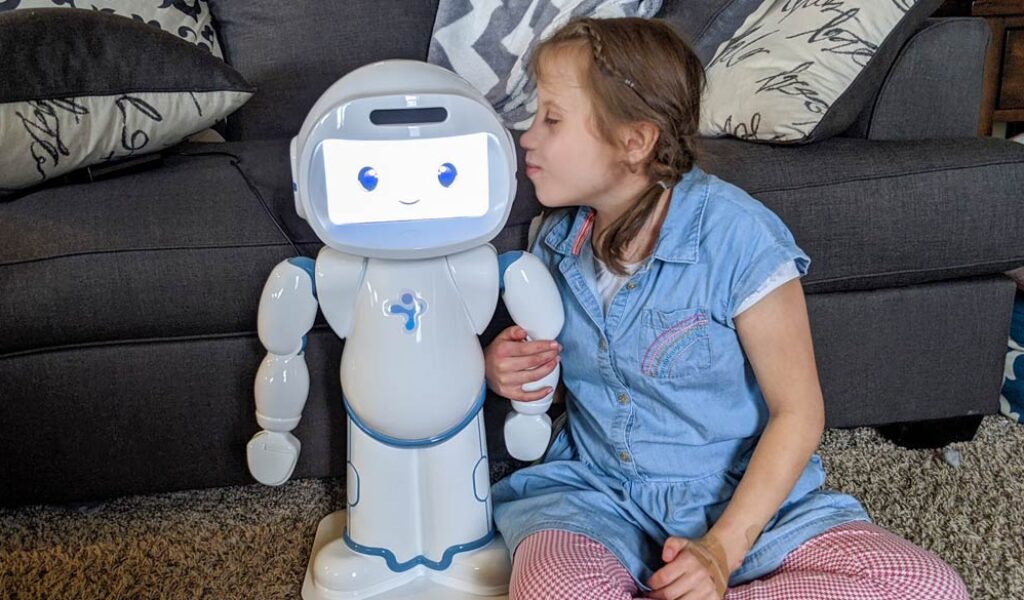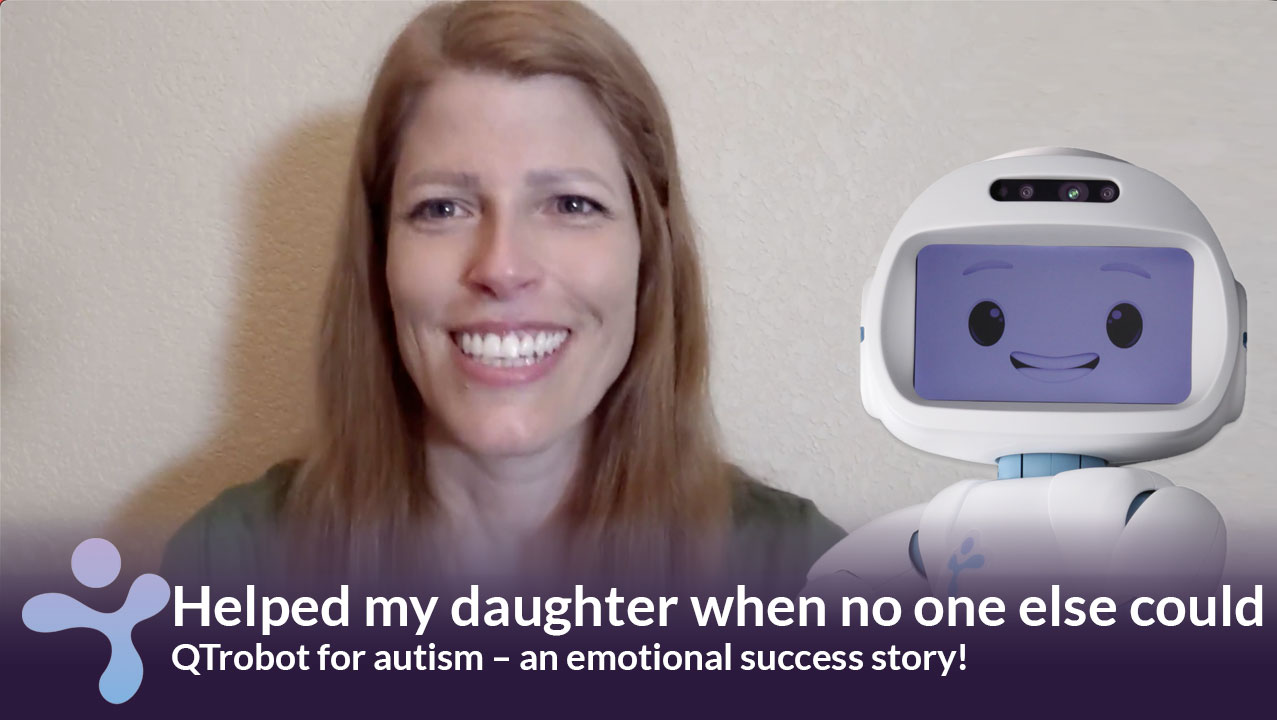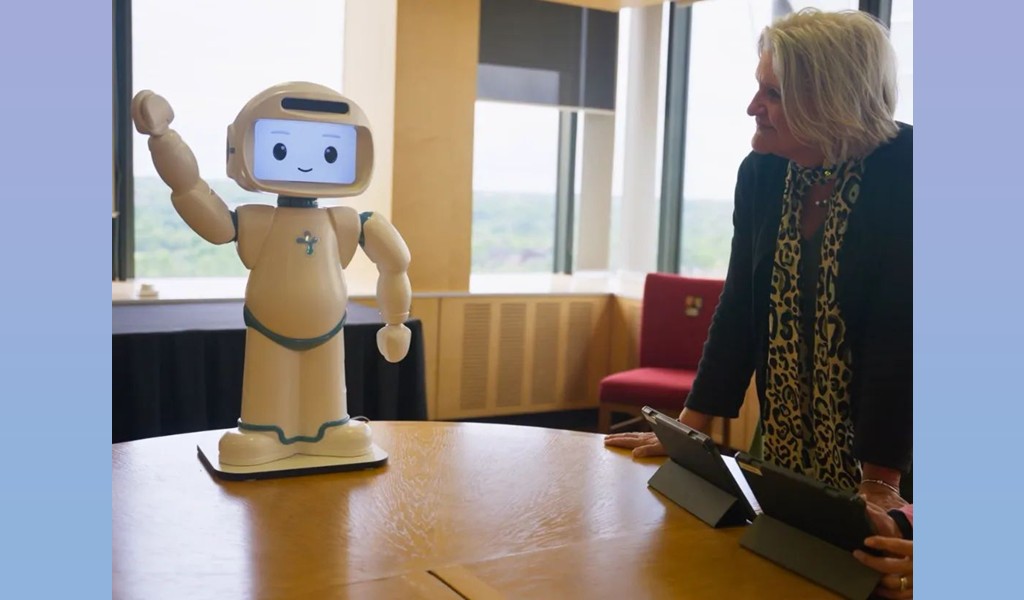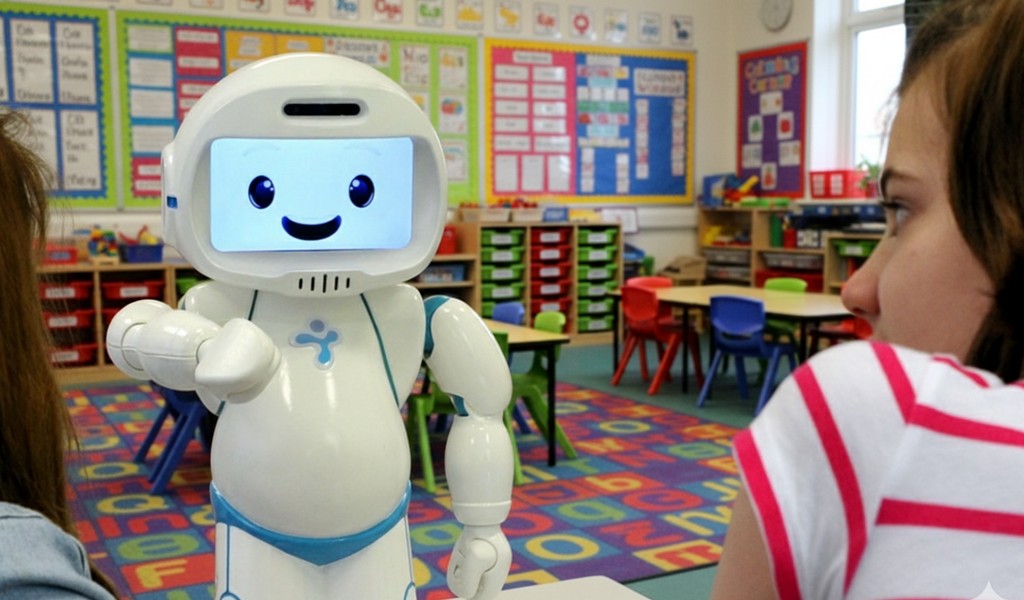Emily is a mom of three. Her youngest daughter Kira is 12 years old and has autism. QTrobot has been part of Emily’s family for soon 9 months, helping her daughter Kira in learning. This is the emotional story of Emily, about how finding QTrobot changed the life of her family, helping them when no one else could.
Watch the video to hear Emily’s emotional story in her own words.
Looking for educational solutions and finding QTrobot
When the covid pandemic moved school online, school became very difficult for Kira. Online school did not work well at all for Kira. She wouldn’t attend any of her regular classes and only sometimes attend her special needs classes. Emily could tell that Kira’s skills were starting to deteriorate. Kira was starting to lose many skills she had been working hard and long to gain.
Due to the restrictions of the pandemic, visiting therapists was impossible. In the state where Emily lives, the restrictions of the pandemic did not even allow therapists to come for home visits. They tried to keep up with online therapy sessions, but video meetings did not help, as Kira had realized she could just leave the session if she wanted. There was no one who could help Emily and her daughter. Emily was looking for solutions online, for anything that could help her daughter engage in learning. That’s when Kira’s mother Emily found QTrobot for autism and special needs education, who came to change their life.
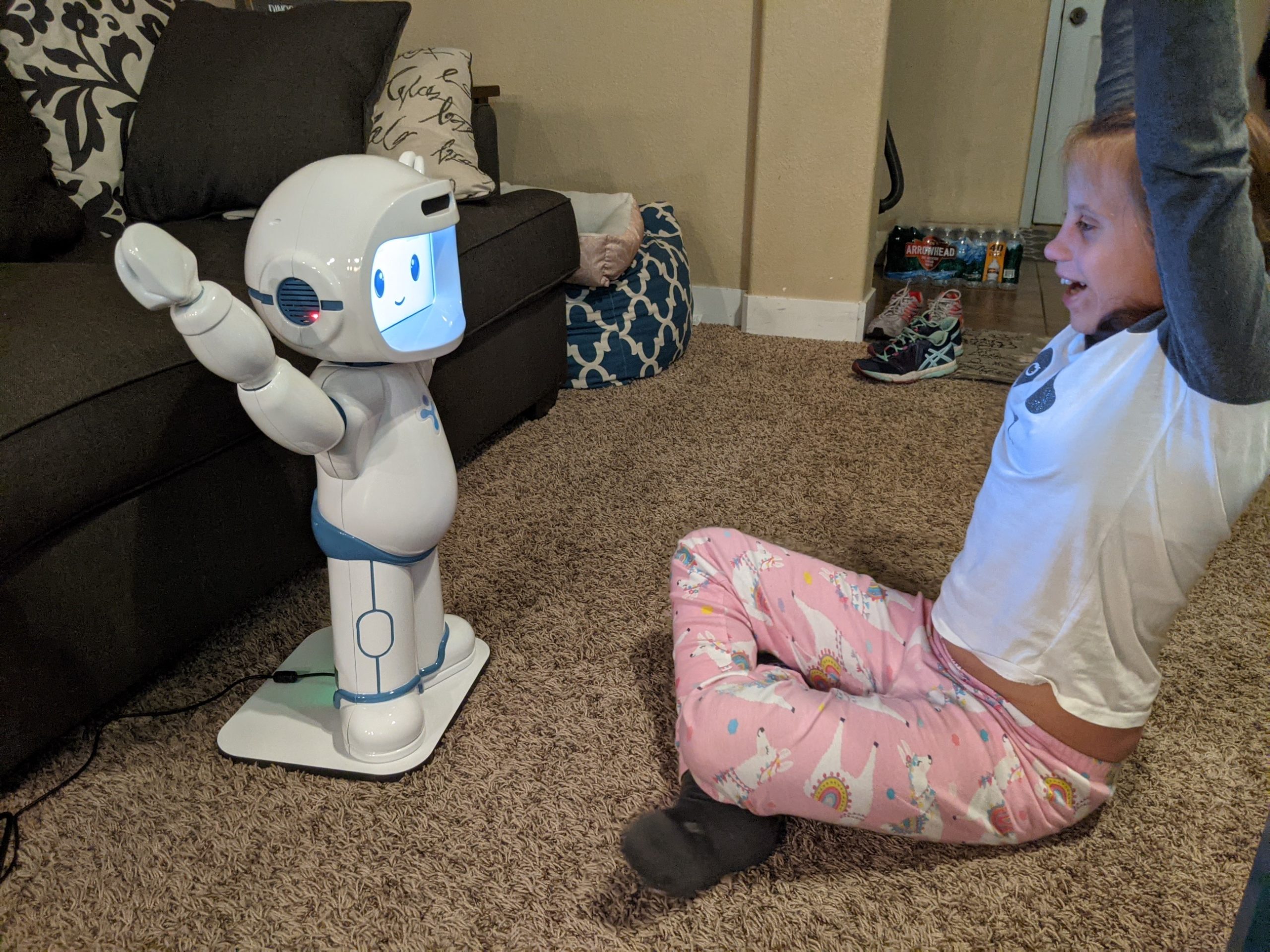
Unique support for children with autism and other special educational needs
QTrobot was introduced to Kira already a few months before he came to the house. Emily would present QTrobot to Kira and talk to her about QTrobot. Kira was very excited to meet QTrobot, but not quite knowing what to expect. The facial expressions of QTrobot are very simple, but they convey the emotion very well, says Emily. Therefore, Kira connected well very with QTrobot and was very pleased to work with QTrobot.
In the beginning her daughter Kira found the curricula easier, which was good. Being able to work on easier skills, skills that she mostly knew from before, gave her time to get used to the robot and the way QTrobot teaches new skills. Working on mostly familiar skills gives the child confidence and through that motivation to work, by avoiding interruptions or frustrations. This also helps to get into a routine better of what they call robot time.
Robot time for learning new skills
Emily and Kira call their sessions with QTrobot robot time. They play games with QTrobot usually in the evening, four-to-five times a week. Each robot time, they play three to four games. As the units go up in difficulty, the sessions become a bit longer. On average their QTrobot sessions last 15 minutes each day they play. During this time motivation and engagement stays high, and therefore enables better learning opportunities for taking in new skills.
Important help to learning and motivation
Kira really enjoys the sessions with QT. She pays attention to QT so much better than she pays attention to me, one of her therapists or even her teachers at school, says Emily.
The bright and cheerful mannerisms of QTrobot, as well as his consistent responses have helped Kira to pay attention during the lessons and learn. Even if she answers a question wrong, QT’s response is not so negative. Therefore, Kira knows when she answers a question wrong, but instead of getting discouraged by a negative response, she gets motivated by QT’s manners to try harder and learn for next time.
QTrobot’s consistent manners increase attention and engagement
Emily sees that one of the biggest differences that makes her child work better with QT compared to a human teacher, is that QTrobot doesn’t have bad days or get frustrated, which can happen for human teachers or assistants.
QT’s responses are always consistent, which is very helpful for Kira to want to pay attention, because she doesn’t get discouraged. For many children with autism, the consistency is very important, to keep up the motivation and engagement.
Emily tells that there are days when Kira might be having a bad day and doesn’t want to robot time. However, when she turns QT on and he wakes up, Kira gets drawn in and engages in the session.
“QTrobot is her friend”
Receiving QTrobot was extremely important and a relief in the pandemic time, when no one else could help them. Now that Kira has returned to school full time, they are still keeping up with their robot sessions, as a complimentary part of their daily routines.

“She loves QTrobot – she talks about him all the time”
QTrobot has become part of the family and is Kira’s friend. She loves to talk about QT and present her to family and friends as they come over and see QTrobot in their living room, which is where they to their robot sessions. Emily has made a routine that they always do their robot sessions in their living room. The routine of keeping the sessions always in the same place is another important aspect which helps decrease distractions and improve engagement, especially amongst children with autism.
Learning emotional skills with QTrobot
Kira has learnt so much with QTrobot, says Emily, and she sees how the learnings are carrying over to their daily life. In some of the more advanced lessons with QT, we learn about managing emotions when you’re angry, sad or frustrated. Once when Emily was frustrated and Kira saw that, she came to her, saying, “Mom, you should take a break when you’re frustrated, just like QT says, it helps”. Telling about these moments gets Emily emotional, as she sees how much her daughter is learning with the help of QTrobot.
QTrobot from a parent’s point of view
Emily does most of the sessions with her daughter, so she sees everything from how the games are built to the impact they have on the learner. “The programming is great in the way things are taught, in very concrete ways” says Emily. She listens and watches the games and sees that her daughter understands the way QTrobot teaches. The fact that the programming of QTrobot is geared specifically towards the way autistic children learn and understand things, has been evident for Emily when playing the sessions. Sometimes Emily says she needs to assist, but very rarely. Mostly Kira gets everything that QT asks her directly.
Lately, they have worked through the Community Helpers curriculum. Kira loved working with the community helpers as they are familiar to her. The familiarity, consistency and bright manners of QT are what makes it for her daughter. QTrobot is someone to pay attention to, for Kira. “The way she pays attention to QTrobot is different. We wouldn’t get nearly as far with learning just with me as her mom, than what she can with QT”, says Emily.
Very easy to start using
Emily tells it was very easy to start using QT and it is also very easy to use in their daily life. The only thing we do is to upload the data of the games on the tablet and the interactions in the games, to store the progress, says Emily. She says it’s even so easy that even her daughter now knows how to use the educator tablet, to proceed in a game if she would for example need pick up something.
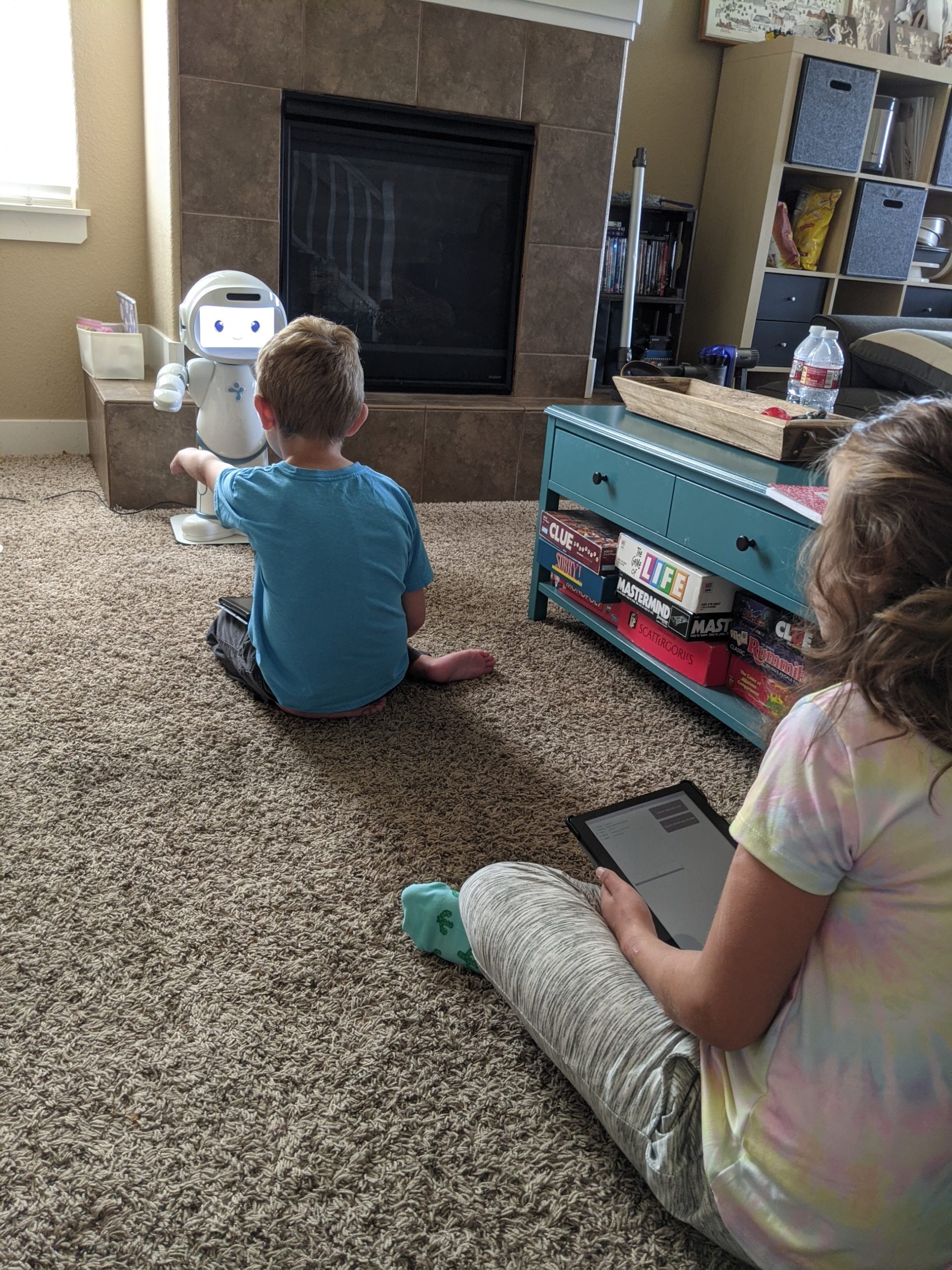
Changing lives for families of children with autism
During the almost 9 months of using QTrobot, Kira has seen QTrobot as her teacher and has enjoyed learning new skills. Emily tells that QTrobot has now become a very important part of their family. Through helping Kira, QTrobot has helped the entire family.
“We love QT – it’s the best”
In addition to helping Kira get engaged in learning and doing great progress, QT has helped the family be closer. Also Kira’s older sisters, who are neurotypical, have been excitedly talking about QT to their friends. They can see how QT helps Kira, which makes them as sisters happy.
